Search Engine Optimization (SEO) is of the utmost importance to digital marketers. We all want our websites to build brand awareness, gain traffic and turn site visitors into leads. But before we get there, we have to make sure search engines (ex: Google!) like what we have to offer. Links — particularly links from other websites — have a lot to do with this.
By optimizing our website and landing pages to Google’s desired state, we can be seen as a quality website that is trusted and provides value to viewers. Therefore, we can rank better on search result pages.
Getting onto that coveted page one search result page is an everlasting and ongoing battle, we know.
But disavowing links to your website might just be your best next step.
But First: A Link’s Importance
It’s true, links to your website are extremely important to SEO as well as building reputation and trust on Google.
So important, in fact, marketers even have a name for all those links. The collection of external links you have to content and landing pages on your website is called a Backlink Portfolio.
The more links you have, the more Google will see your website as one of authority. If a lot of other websites are linking to your content, it must be pretty good stuff!
Building a Backlink Portfolio
In a perfect world, all backlinks would happen organically (i.e., a different website or company finds your content on their own). They think it’s worth sharing, and give you a shoutout by putting a link to your content on their own site.
It’s just like someone introducing you at a party. You are introduced by the party’s host to all the other guests. Suddenly, a whole bunch of new people know about you. Awesome!
In the digital marketing world, a backlinks means your website now has more opportunities to gain new traffic.
There are other ways to build your backlink portfolio. Link building by asking other people to link to you is a valid strategy. It’s not organic, but over time it will help.
Some websites opt for more shady strategies, such as paying for backlinks from link farms (not recommended). More on that to come.
The More Links the Better? One Exception
Wait, didn’t we just say the more links you have, the better you’ll rank?
For the most part, yes. But there are certain kinds of links you DON’T want linked back to you.
The next natural question would be: well, what kind of links don’t you want?
Short answer: the bad ones.
Slightly longer answer: any links coming from shady websites, like link farms.
Over time, either because of shady backlink strategies or if for some reason a link farm’s bots decide to target your content, it can create toxicity in your domain.
If most of your links come from what Google considers “bad sites,” it lowers your domain authority, thereby impacting your ability to rank properly.
What’s important to note here is that bad links can form in your portfolio without you even doing anything wrong. You may not have paid for any backlinks, but, unfortunately, bad links can build up organically too.
But don’t worry, we are going to show you how to fix it.
Big Question, Easy Answer
Back to the big question at hand: Should you disavow external links to your website?
YES!
But only the bad ones that negatively impact your rank. It’s important to leave the good ones alone.
Now it’s time to get rid of the bad.
How to Disavow (Bad) Links: Step by Step
Disavowing bad links to your website means that you are telling Google you know about bad links to your website and are asking to ignore them.
Provide a list of those pesky bad links to say to Google: “I know these link to us, and I know they are not quality links or websites. Don’t count them please!” And Google will do just that.
Here’s a mini-guide to help, from start to finish.
Step 1: SEMRush
If you have a sizable link portfolio, looking at the quality of each link is going to be hard to do by hand.
Instead, opt for a tool like SEMRush to automatically analyze your backlink portfolio.
Step 2: Project + Setup
Once you have SEMRush ready to go, it’s time to create a project.
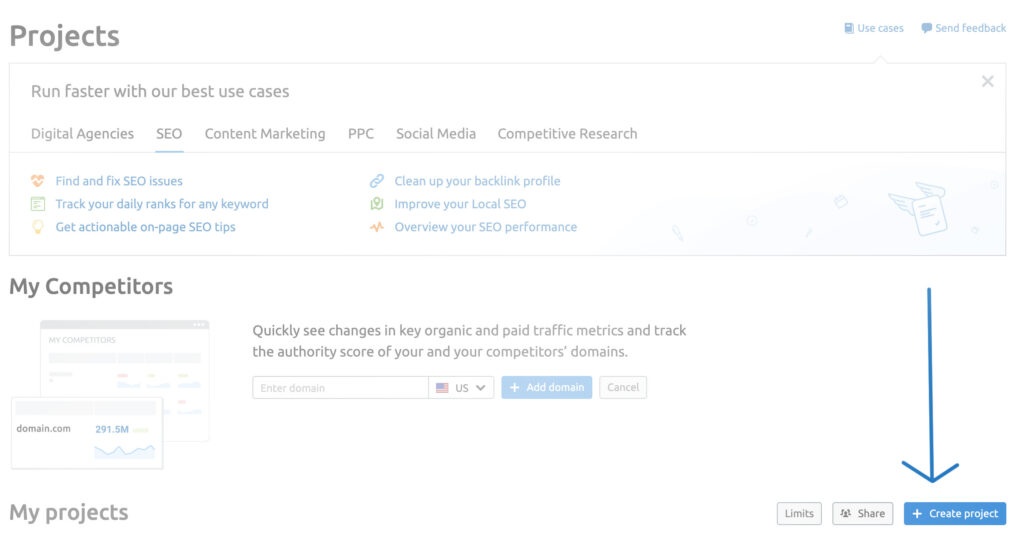

Step 3: Audit
Next, we want to run a backlink audit. Hit setup.

Simply click Start Backlink Audit.
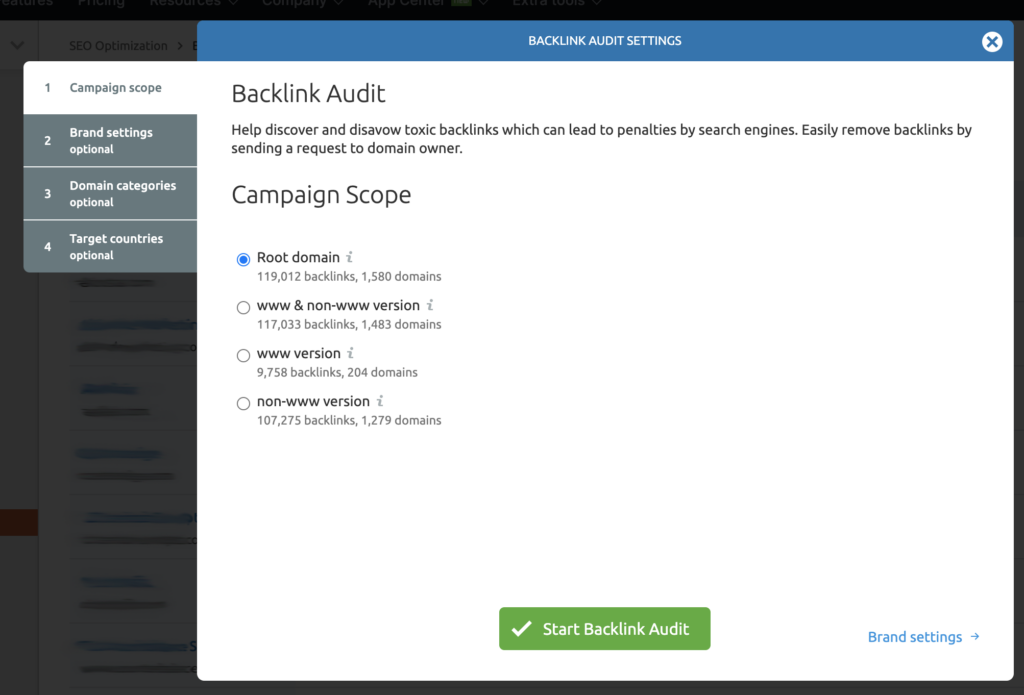
The process may take some time, sometimes even a few hours. But the payoff is huge.
Step 4: Check Your Score
The first thing to take note of is your Overall Toxicity Score.
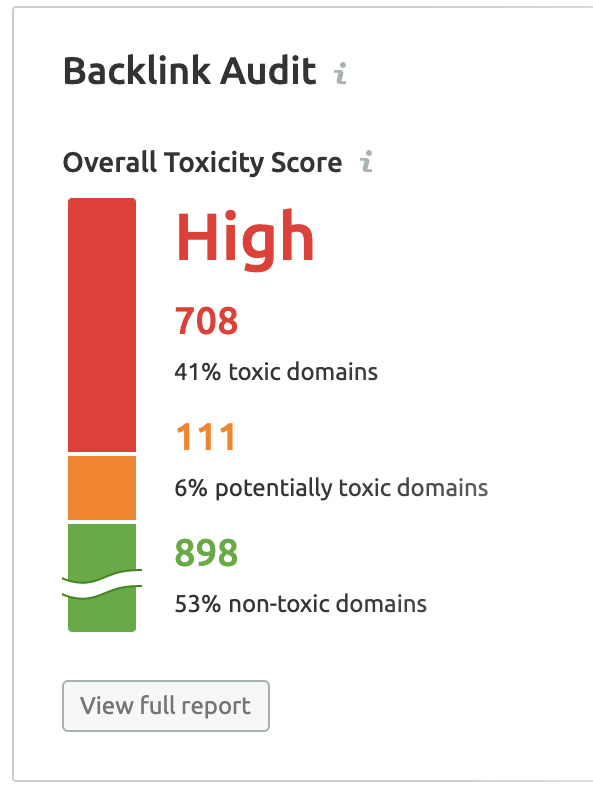
If it’s high, you’ve got a lot of bad links.
Don’t worry though, you likely didn’t do anything wrong. It’s just time for a cleanup.
Step 5: Check Your Links
Next, go into your toxic domains.
By filtering the results to view the links with high toxicity scores (60-100), you can see which links are actively hurting your SEO.
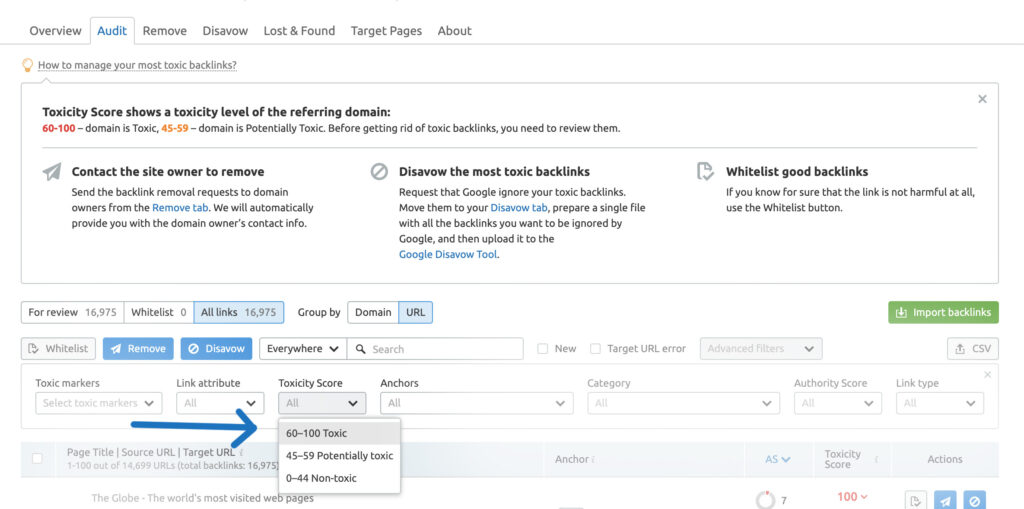
Step 6: Disavow
Select all of these toxic links, and hit the disavow button.
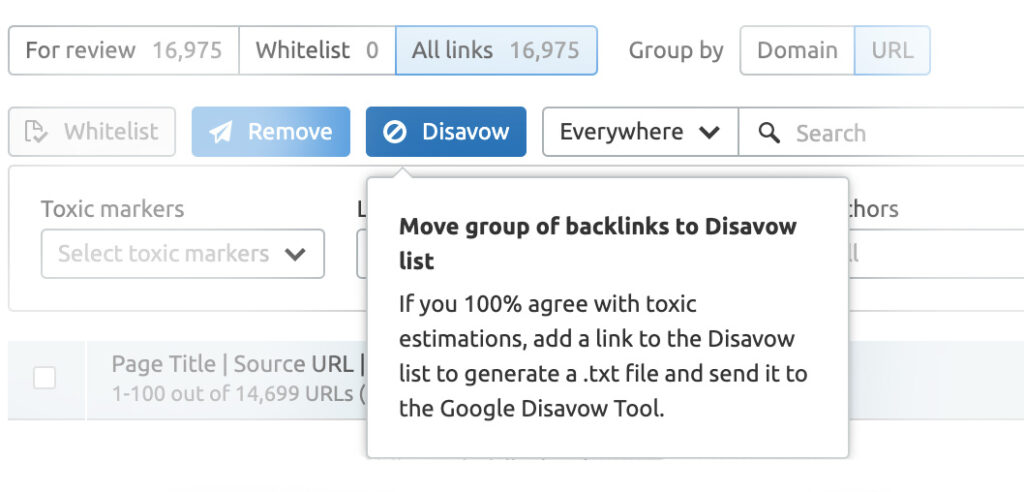
Be sure you do NOT disavow any of your quality links. Only select the ones with high toxicity scores; otherwise, you risk losing all the good, organic backlinks you’ve worked so hard to get.
Step 7: .txt
Next, export that list of links to a .txt file and save it to your desktop.
Step 8: Google Search Console
Last step! Here’s a handy link to the disavow links tool page in the Google Search Console.
Upload your .txt file from your desktop here, and press save.
A warning will appear. This is a caution for you to make sure these are your toxic links. Don’t get rid of the good!
Nice. You’re all done!
SEMRush’s advanced functionality will automatically monitor your domain on an ongoing basis from now on. Check back periodically to see updates about your website and backlink portfolio.
A Word of Warning
It’s important that you always review your links before disavowing. Be careful you aren’t disavowing your quality links. Otherwise, you may end up seriously hurting your SEO.
If you are worried, or don’t feel comfortable doing this kind of work yourself, call in an expert. Better to be safe than sorry.
Disavowing the bad links on your website should be a once-a-year endeavor, if that. If you find yourself needing to disavow bad links several times a year, consider looking into what content of yours is constantly being spam linked to.
For example: If the link farm bots picked up a certain image on your site, changing that image may be a good idea. It will put a halt to their shenanigans, and save you a lot of time in the future.
tl;dr
Should you disavow links to your website? Yes, but only the bad quality links that are hurting your domain authority. Leave the good ones be, so you can rank higher on those search pages.



